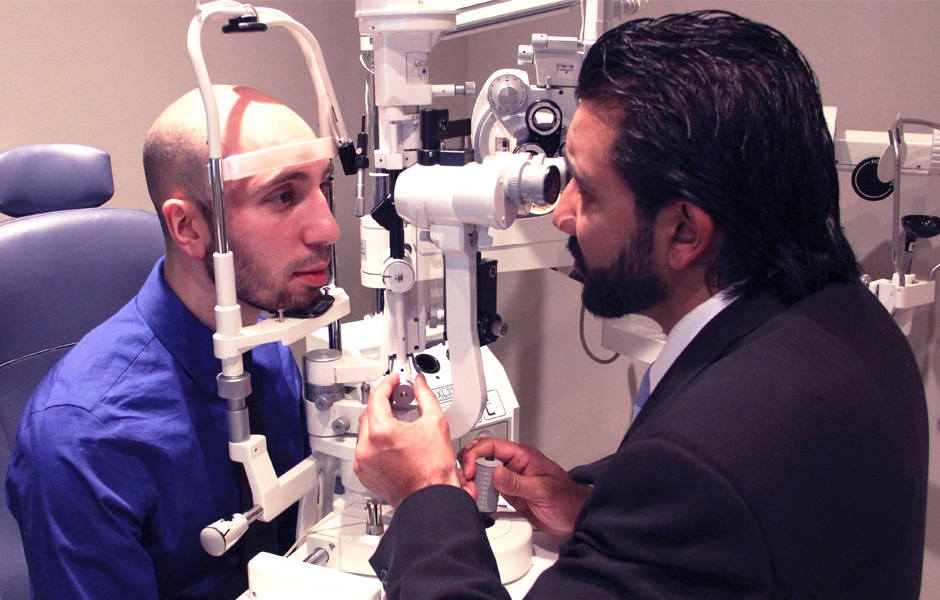Neurologist Andalusia: Expert Neurological and Eye Treatment Providers
Neurologist Andalusia: Expert Neurological and Eye Treatment Providers
Blog Article
Recognizing the Different Vision Correction Procedures Available for Clearer View
In the realm of vision correction treatments, a wide variety of options exist to resolve refractive mistakes and offer people with clearer view. Let's check out the intricacies of these treatments and lost light on the path to attaining enhanced vision quality (Cardiologist Andalusia).
LASIK Surgical Procedure
LASIK surgical treatment is an usual refractive procedure used to deal with vision problems such as nearsightedness, farsightedness, and astigmatism. This surgical method, which means Laser-Assisted sitting Keratomileusis, intends to improve the cornea to boost just how light is concentrated on the retina, eventually enhancing vision clearness. During the treatment, a slim flap is developed on the cornea, and a laser is made use of to get rid of specific quantities of cells to improve it suitably. This improving enables light to be accurately focused onto the retina, fixing refractive errors.
One of the primary benefits of LASIK surgery is the quick renovation in vision experienced by people. Many people see a substantial improvement in their sight quickly after the treatment. In addition, the majority of people report very little discomfort and discomfort during the surgery and recovery duration. The healing time for LASIK is fairly quick, with many people returning to their daily activities within a day or 2 post-operation. On the whole, LASIK surgical procedure is a prominent option for individuals seeking a long-term service for their vision problems.
PRK Procedure

PRK is an ideal option for people with slim corneas or those at a greater risk of eye injuries, as it does not include developing a corneal flap. The recovery process for PRK is slightly longer contrasted to LASIK, as the epithelium requires time to regenerate. Individuals might experience discomfort and blurred vision for a couple of days following the procedure.
In spite of the longer recuperation time, PRK can yield exceptional outcomes in vision improvement, making it a useful option for those who may not be appropriate candidates for LASIK surgery. - Andalusia Pediatrics
Implantable Lenses
Unlike PRK where the cornea is improved directly, implantable lenses provide another technique for dealing with vision by putting synthetic lenses inside the eye. This treatment is particularly valuable for individuals with high levels of farsightedness, astigmatism, or nearsightedness that might not appropriate prospects for laser surgical procedures like LASIK or PRK.
Implantable lenses, likewise known as phakic intraocular lenses, work by supplementing the eye's all-natural lens with a fabricated one. These lenses can be positioned before the all-natural lens (former chamber) or behind the iris and in front of the all-natural lens (posterior chamber) By adjusting the power and positioning of these lenses, ophthalmologists can efficiently correct refractive mistakes and improve visual acuity.
One advantage of implantable lenses is that they are removable and exchangeable, giving adaptability for future changes. As with any type of surgical treatment, there are risks included, such as infection or cataract formation. Clients considering implantable lenses need to seek advice from an eye treatment expert to determine one of the most ideal choice based upon their individual demands and eye health.
Corneal Rings

The treatment for putting corneal rings is minimally intrusive and reasonably fast, frequently Read Full Article carried out as an outpatient procedure. During the surgical treatment, the ophthalmologist makes a little cut in the cornea and inserts the rings at a certain depth. When in position, the rings assist to reshape the cornea, offering a smoother surface for light to enter the eye, which can result in clearer vision.
Corneal rings are considered a reversible procedure, as they can be removed or replaced if essential. While they might not entirely get rid of the requirement for glasses or get in touch with lenses, corneal rings can basics substantially enhance vision high quality and general visual convenience for people with keratoconus or various other corneal abnormalities.
Refractive Lens Exchange
Complying with the adjustment of corneal irregularities with procedures like corneal rings, another vision adjustment technique that can address refractive mistakes is Refractive Lens Exchange (RLE) RLE is an operation that involves changing the eye's all-natural lens with a fabricated intraocular lens (IOL) to remedy refractive mistakes such as presbyopia, nearsightedness, and farsightedness. This procedure is specifically helpful for people that may not appropriate candidates for procedures like LASIK or PRK because of elements such as thin corneas or high refractive errors.
RLE belongs to cataract surgical treatment, as both involve eliminating the eye's all-natural lens; however, in RLE, the lens is clear, not gloomy as pop over to this web-site in cataracts. The synthetic lens dental implanted throughout RLE can be customized to attend to the person's certain refractive error, supplying clear vision at different distances. Recovery time for RLE is fairly quick, and patients can anticipate improved vision not long after the treatment. As with any operation, prospective risks and complications exist, so a thorough examination with an eye treatment professional is important to identify if RLE is the appropriate vision adjustment option.
Conclusion

In the world of vision modification procedures, a multitude of alternatives exist to attend to refractive errors and give individuals with clearer view.LASIK surgery is an usual refractive procedure made use of to remedy vision problems such as farsightedness, astigmatism, and nearsightedness.While additionally a typical refractive treatment, the PRK (Photorefractive Keratectomy) method varies from LASIK surgery in its approach to correcting vision problems.Adhering to the modification of corneal abnormalities with procedures like corneal rings, an additional vision correction method that can address refractive errors is Refractive Lens Exchange (RLE) LASIK surgical procedure, PRK procedure, implantable lenses, corneal rings, and refractive lens exchange are all alternatives that can address various vision concerns.
Report this page